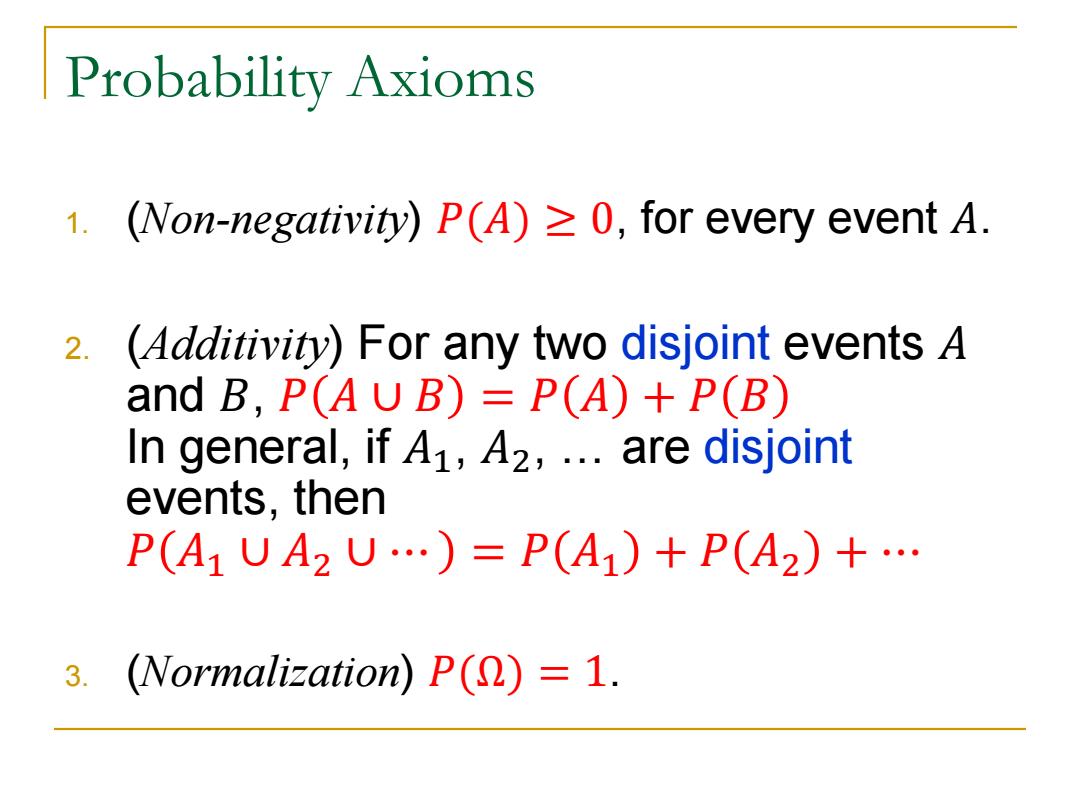
Probability Axioms 1.(Won-negativity)P(A≥0,for every event A. 2.(Additivity)For any two disjoint events A and B,P(AUB)=P(A)+P(B) In general,if A1,A2,...are disjoint events,then P(A1UA2U…)=P(A1)+P(A2)+… 3.(Normalization)P()=1
Probability Axioms 1. (Non-negativity) 𝑃(𝐴) ≥ 0, for every event 𝐴. 2. (Additivity) For any two disjoint events 𝐴 and 𝐵, 𝑃 𝐴 ∪ 𝐵 = 𝑃 𝐴 + 𝑃 𝐵 In general, if 𝐴1, 𝐴2, … are disjoint events, then 𝑃 𝐴1 ∪ 𝐴2 ∪ ⋯ = 𝑃 𝐴1 + 𝑃 𝐴2 + ⋯ 3. (Normalization) 𝑃(Ω) = 1
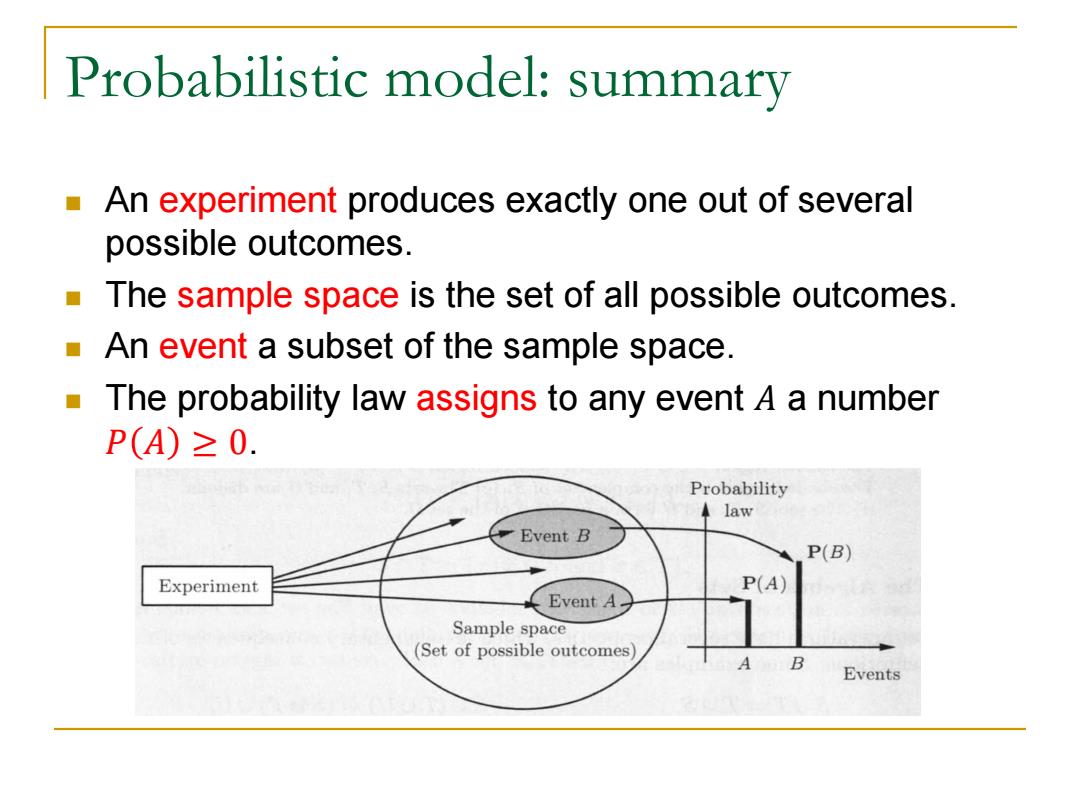
Probabilistic model:summary An experiment produces exactly one out of several possible outcomes. The sample space is the set of all possible outcomes. ■ An event a subset of the sample space. The probability law assigns to any event A a number P(A)≥0. Probability ◆law Event B P(B) Experiment P(4) Event A- Sample space (Set of possible outcomes) A B Events
Probabilistic model: summary An experiment produces exactly one out of several possible outcomes. The sample space is the set of all possible outcomes. An event a subset of the sample space. The probability law assigns to any event 𝐴 a number 𝑃 𝐴 ≥ 0
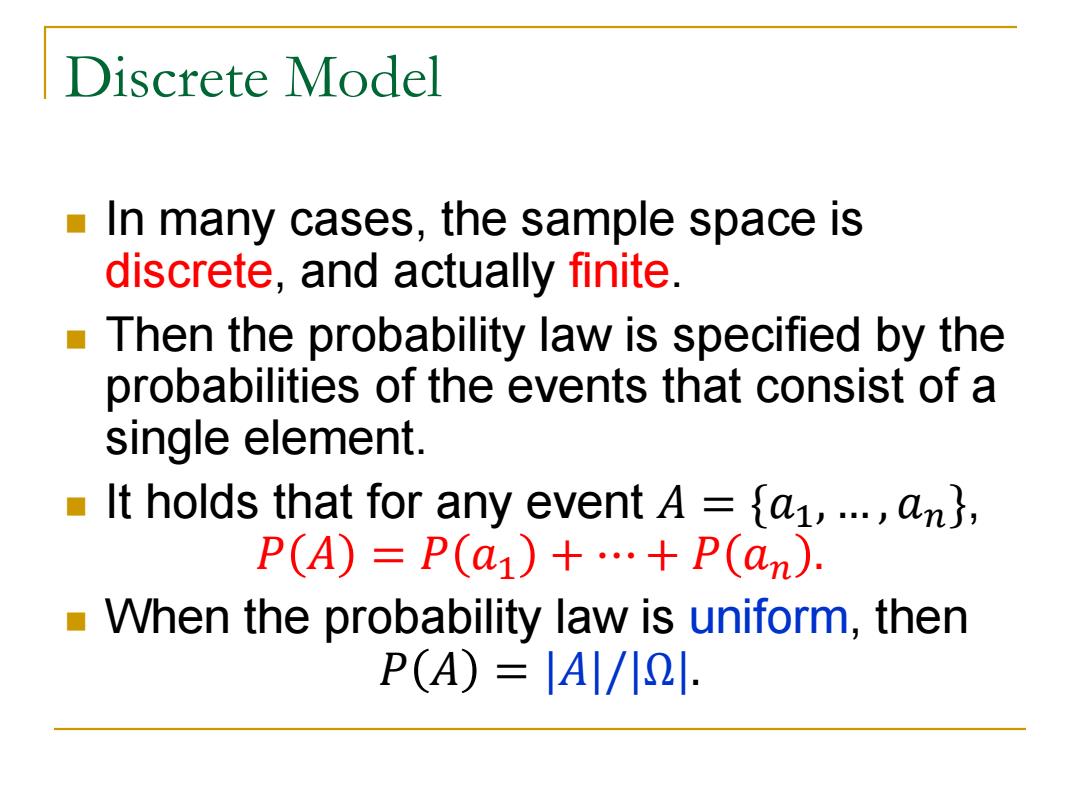
Discrete Model In many cases,the sample space is discrete,and actually finite. Then the probability law is specified by the probabilities of the events that consist of a single element. It holds that for any event A {a1,...,a, P(A)=P(a1)+…+P(an). When the probability law is uniform,then P(A)=IA/八2
Discrete Model In many cases, the sample space is discrete, and actually finite. Then the probability law is specified by the probabilities of the events that consist of a single element. It holds that for any event 𝐴 = {𝑎1, … , 𝑎𝑛}, 𝑃 𝐴 = 𝑃 𝑎1 + ⋯ + 𝑃 𝑎𝑛 . When the probability law is uniform, then 𝑃 𝐴 = |𝐴|/|Ω|
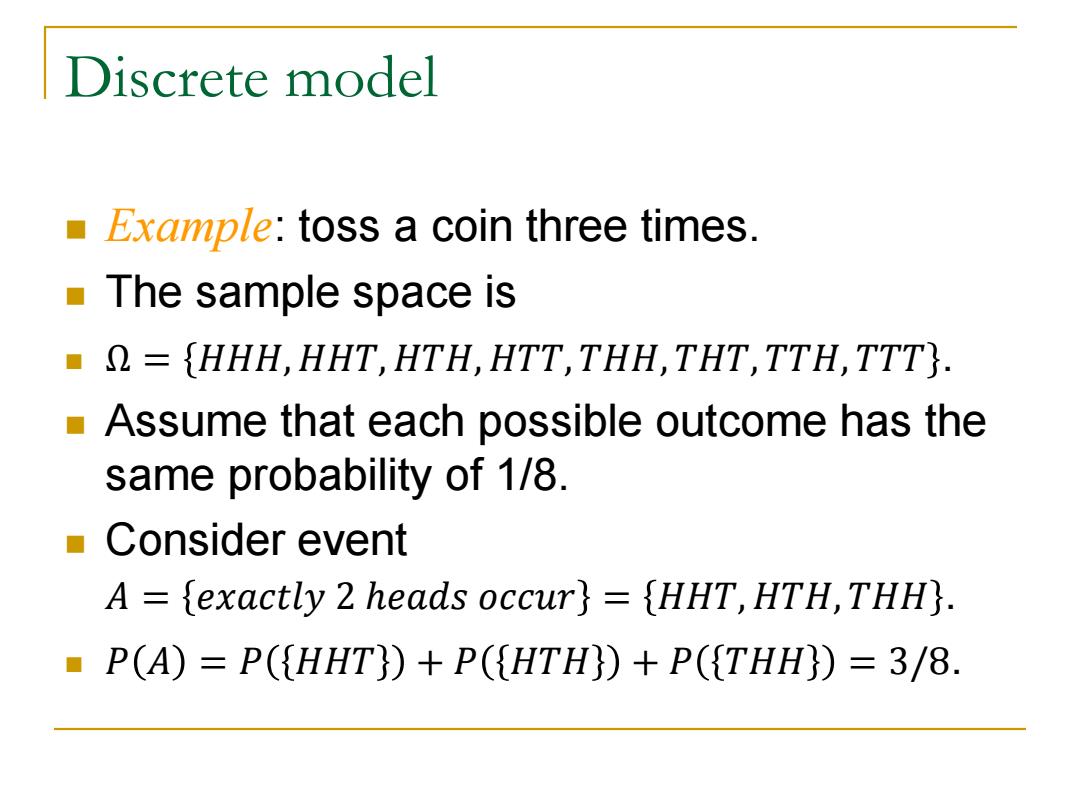
Discrete model Example:toss a coin three times. The sample space is =HHH,HHT,HTH,HTT,THH,THT,TTH,TTT Assume that each possible outcome has the same probability of 1/8 Consider event A {exactly 2 heads occur=(HHT,HTH,THH. P(A)=P(HHT)+P(HTH+P(THH)=3/8
Discrete model Example: toss a coin three times. The sample space is Ω = 𝐻𝐻𝐻, 𝐻𝐻𝑇, 𝐻𝑇𝐻, 𝐻𝑇𝑇, 𝑇𝐻𝐻, 𝑇𝐻𝑇, 𝑇𝑇𝐻, 𝑇𝑇𝑇 . Assume that each possible outcome has the same probability of 1/8. Consider event 𝐴 = 𝑒𝑥𝑎𝑐𝑡𝑙𝑦 2 ℎ𝑒𝑎𝑑𝑠 𝑜𝑐𝑐𝑢𝑟 = 𝐻𝐻𝑇, 𝐻𝑇𝐻, 𝑇𝐻𝐻 . 𝑃 𝐴 = 𝑃 𝐻𝐻𝑇 + 𝑃 𝐻𝑇𝐻 + 𝑃 𝑇𝐻𝐻 = 3/8
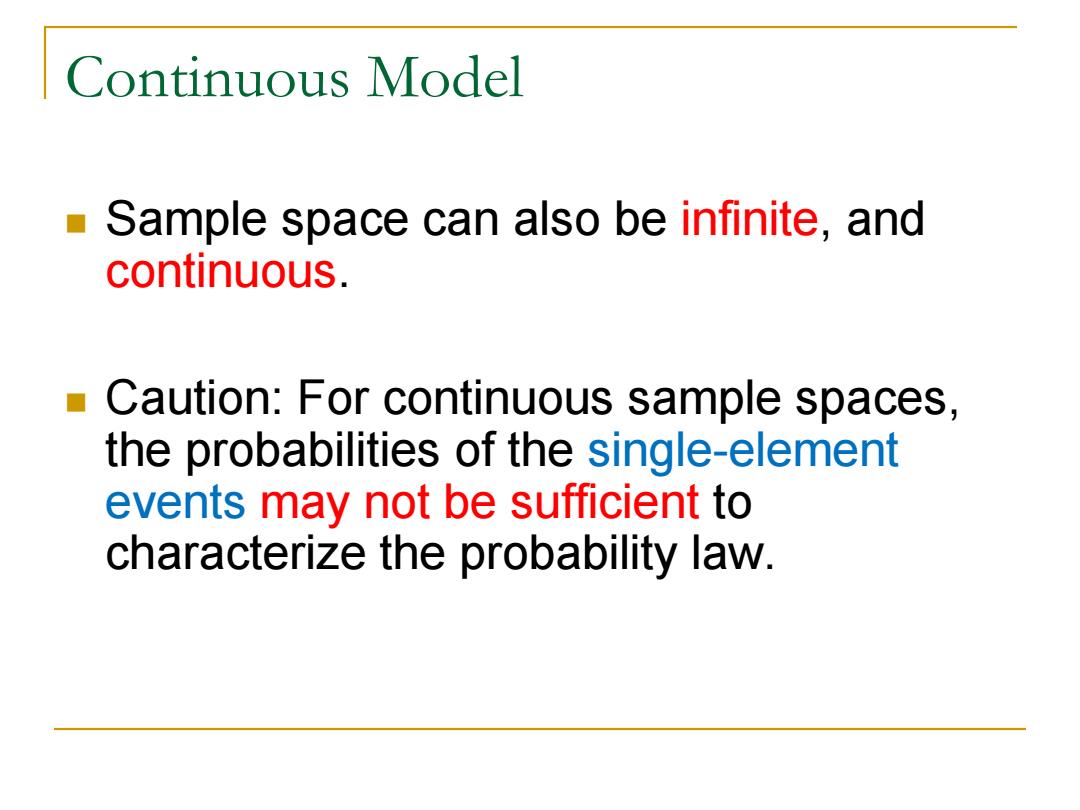
Continuous Model Sample space can also be infinite,and continuous. ■ Caution:For continuous sample spaces, the probabilities of the single-element events may not be sufficient to characterize the probability law
Continuous Model Sample space can also be infinite, and continuous. Caution: For continuous sample spaces, the probabilities of the single-element events may not be sufficient to characterize the probability law